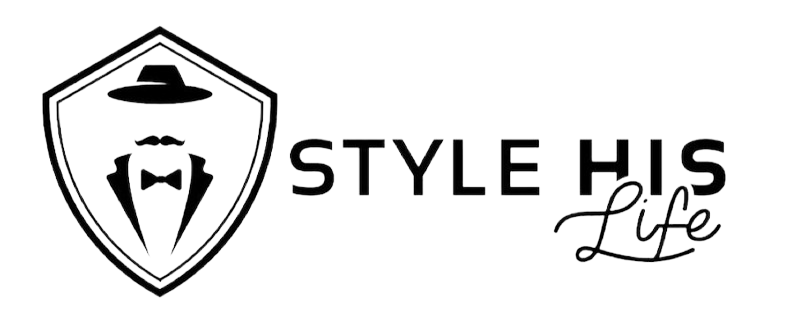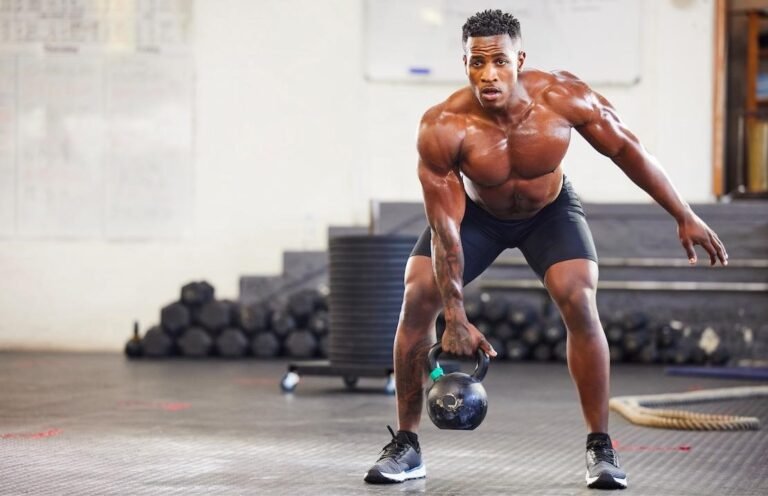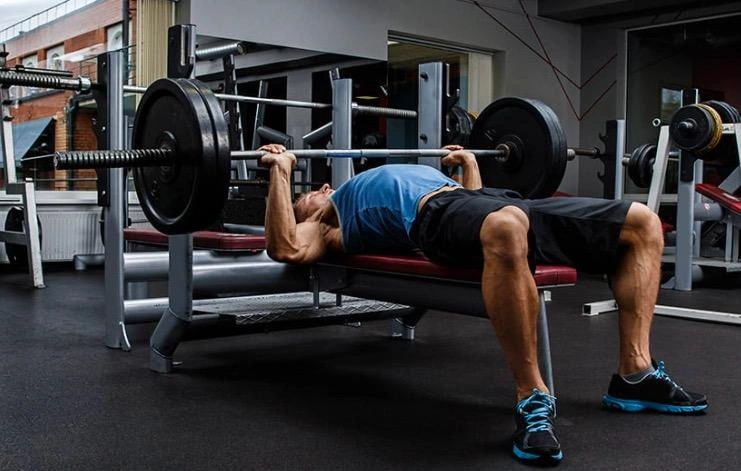Gaining muscle while cutting might seem impossible—like finding a fitness holy grail. But new research shows something amazing: It proves that it’s not too hard, and it has science behind it.
People who ate lots of protein on a low-calorie diet kept more muscle and lost more fat. Managing what you eat is at the heart of body recomposition. That means you can lose fat and gain muscle simultaneously, changing your body a lot.
Want to look good or be better at sports? Studies show that eating enough protein and doing the right exercises can change how your body is made up.
The International Society of Sports Nutrition says a diet with lots of protein and the right workouts can help you keep your muscle while eating fewer calories1.
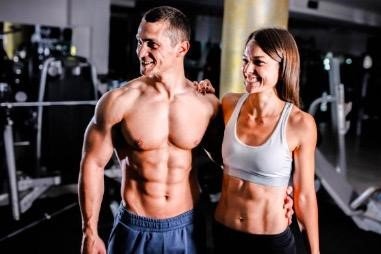
Key Takeaways
- Body recomposition is achievable through higher protein intake and strength training while in a caloric deficit1.
- Retaining muscle while cutting fat is not a myth but a proven approach, validated by the fitness community and scientific studies alike12.
- Protein distribution throughout the day is essential for muscle recovery and growth1.
- Resistance training is a pivotal element that aids in both increasing muscle mass and decreasing body fat2.
- Combining various types of exercise, including cardiovascular activities, can optimize body recomposition efforts2.
- Progress in body recomposition transcends the scale, focusing on improved body fat-to-muscle ratio for overall health1.
Understanding Body Recomposition
Body recomposition is a way to change your body by losing fat and gaining muscle. This is more about improving how your body looks and works than just losing weight. It can lower your chances of becoming ill with diseases like diabetes, cancer, and heart problems. Making the right changes in what you eat and how you exercise can help you reach a healthier state.
Eating more protein, around 0.64 grams for each pound you weigh, is key. It’s better than eating less protein when trying to lose fat. Also, switching up your calories and eating a diet full of protein and key nutrients is important. It helps keep your muscles while you lose fat when trying to change your body13.
Being active and lifting weights? Adding 35 grams of protein to your daily diet can help build more muscle1. It’s also good to eat protein-rich foods every three to four hours. This helps your body keep building muscle and burn fat1.
| Nutritional Strategy | Detail | Benefits |
| High Protein Intake | Minimum of 0.64 g/lb of body weight | Preserves muscle mass during fat loss1 |
| Calorie Cycling | Rotational increase in caloric intake, especially from carbohydrates | Overcomes weight-loss plateaus, aids in muscle retention3 |
| Increased Fiber | Consumption of fiber-rich foods | Helps reduce abdominal fat and improves satiety1 |
Knowing how to balance the amount of food you eat and when you eat can help change your body for the better. It’s not just about losing fat – you can also get stronger and look healthier.
Caloric Deficit vs. Muscle Growth: Striking a Balance
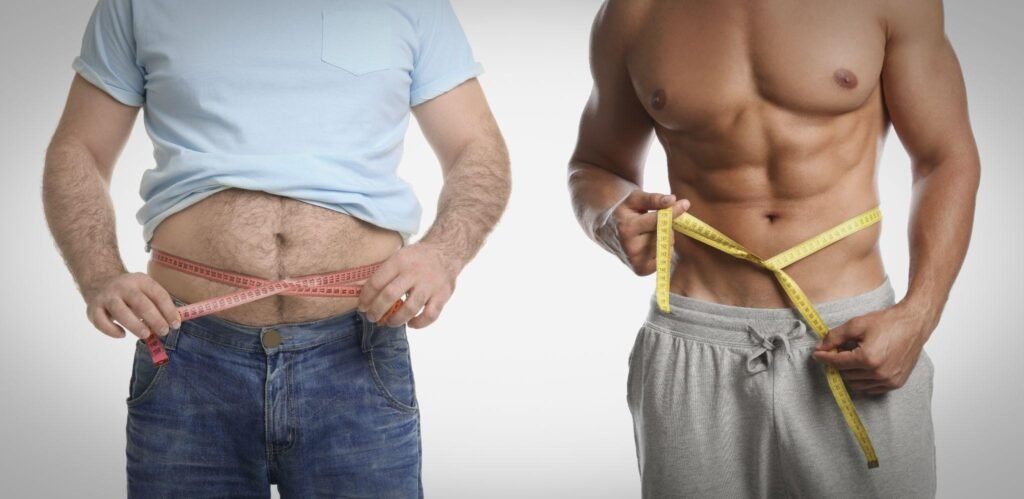
Balancing a caloric deficit for fat loss with enough calories for muscle growth is vital in the search for better fitness and looks. Knowing how to switch between these goals is key. This allows you to lose fat while growing muscle, improving your body overall.
Creating a Caloric Deficit for Fat Loss
To lose fat, eating fewer calories than your body uses iscritical. A 500-calorie deficit daily can help shed about a pound of fat per week4. You can lower your food intake or increase exercise to hit this target. But cutting back on food is usually easier and takes less time than working out more4. Also, what you eat matters a lot in terms of losing fat. Make smart choices and pick foods that are low in calories but high in nutrients to keep you healthy as you cut fat.
Sufficient Caloric Intake for Muscle Synthesis
On the flip side, building muscle requires you to eat more calories than you burn. This extra food helps your body make new muscle, especially during strength training. Athletes who lift weights might need more protein, about 1.1 to 1.4 grams per pound, to keep or grow muscle even when they eat less1. Eating a lot of protein helps with muscle growth and fixing your muscles after hard workouts1. Focus on adding plenty of protein from sources like chicken, beans, and milk to your meals. And follow a strict lifting program to get the most out of your diet for muscle building.
You need a smart plan to improve your body by losing fat and gaining muscle. It’s about managing calories and the kinds of food you eat. By changing your diet and workout routine as needed, you can reach your goal. You will lose fat and grow muscle, reshaping your body exactly how you want it.
Get Lean and Build Muscle At The Same Time
Getting lean and building muscle simultaneously takes careful planning. Eating lots of protein and doing the right kinds of workouts are vital. These steps help you change your body and add muscle while losing fat.
High-Protein Diet Essentials
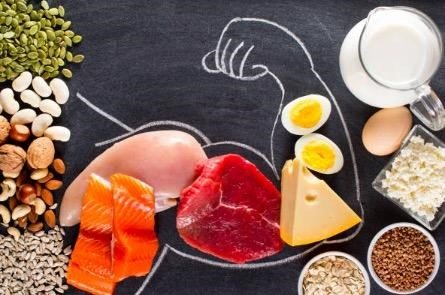
A diet high in protein is key to keeping muscle while dropping fat. Studies show that aiming for 0.73 to 1 gram of protein per pound daily boosts muscle and power1. Athletes who eat 1.14 to 1.3 grams during cutbacks lose less muscle1. Eggs, chicken, and dairy are great for muscles1. Try to spread protein throughout your meals for better muscle building and repair.
Resistance Training for Simultaneous Fat Loss and Muscle Gain
Adding strength workouts not only makes your muscles bigger but also helps burn fat. Moves like squats and push-ups boost the calories you use up, even when you’re not active1. The experts advise doing tough strength training and eating up to 3 grams of protein per kg to lose fat and grow muscle2. Mixing up your workouts and levels of resistance can help a lot. It lets you build muscle and cut fat together, which is the aim of a good fitness plan.
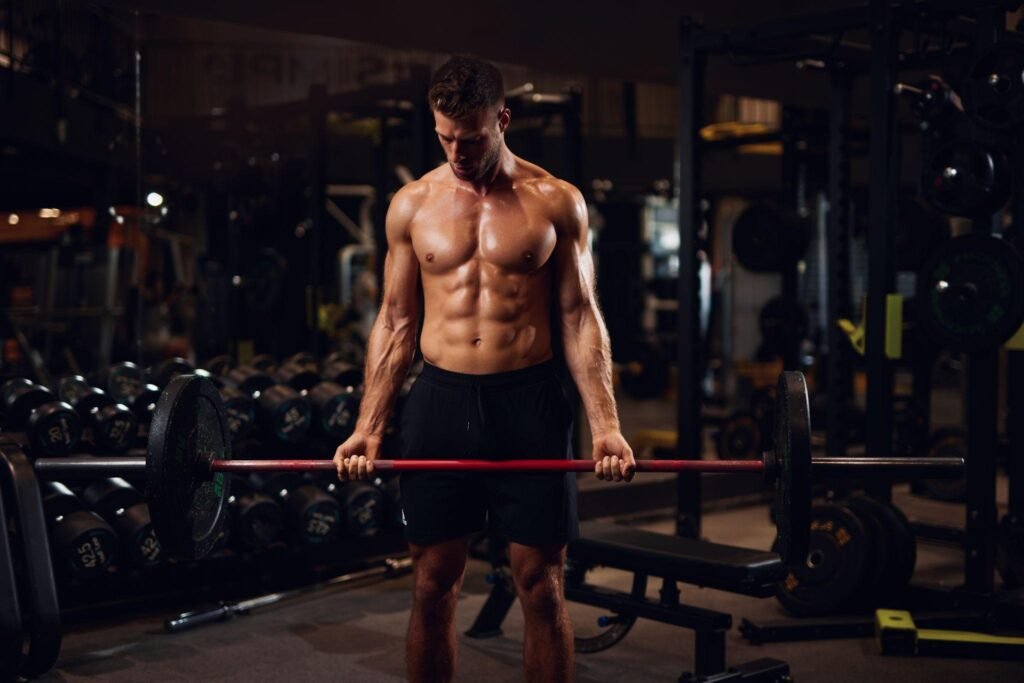
By combining the right diet and strength workouts, you set the stage for big changes. This combo helps you shed fat and add muscle. It’s not just about looks; it boosts your health, too, and makes you better overall.
Optimizing Nutrition for Body Recomposition
Optimizing nutrition is essential in body recomposition. The aim is to lower fat while improving diet quality and maintaining muscle. Switching to a high-protein diet is vital. It helps maintain lean muscle when eating fewer calories and burns fat well1.
To boost diet quality, cut down on processed foods and carbs. Then, add more fiber. This helps lower body fat and boost health1. It’s also important to balance what you eat. Include healthy fats and good carbs along with plenty of protein. This mix helps maintain muscles and health.
Eating at least 0.64 grams of protein per pound of body weight can really help. It protects muscle and burns fat when eating fewer calories1.
To improve your diet even more, check out the table below. It offers guidelines on what to eat.
| Macronutrient | Percentage of Daily Intake | Focus Area |
| Proteins | 30-35% | Muscle Maintenance |
| Carbohydrates | 30-35% | Energy Levels |
| Fats | 30-40% | Energy and Hormone Production |
Creating a diet that’s rich in protein can work wonders. It helps boost muscle and cut down fat. For anyone doing resistance training and watching calories, aim for 1.1 to 1.4 grams of protein per pound daily. This keeps lean muscles strong1.
If you’re very active, shoot for even more protein. The best amount is around 1.14 to 1.3 grams per pound. This keeps muscle loss low and fat burning high1.
- Focus on getting the right balance of macronutrients to keep muscles during a diet.
- Work towards losing fat in a healthy way that keeps your body strong.
Ultimately, getting the right nutrition for body recomposition is not just about calories. It’s about diet quality, balancing your macros, and focusing on protein. This approach helps burn fat and keep muscle. By following these tips, you can improve how you reshape your body.
The Role of Strength Training in Muscle Gain
Strength training is critical for building muscle and improving health. Doing exercises that work different muscles helps you get stronger. It also raises your metabolic rate, making it easier to lose fat2.
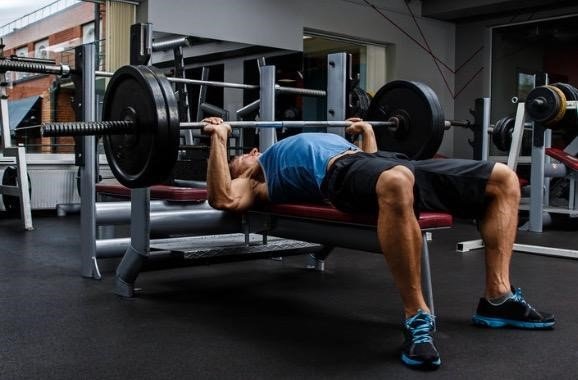
A muscular figure is lifting weights with determination, sweat dripping down their face. The background is a gym filled with various exercise equipment and other individuals working out. The focus is on the strength training element, with the muscles bulging and straining as they push themselves to the limit.
Key Exercises for Maximum Muscle Growth
To build muscle, include both single-joint and multi-joint exercises. Biceps curls work one muscle at a time, perfect for detail work. But big movements like squats work many muscles, helping grow muscle faster and burn more calories25.
Make sure your workouts have a mix of these exercises. This will maximize your muscle growth and strength gains.
Importance of Recovery in Strength Training
Proper recovery is crucial for muscle growth. Sleeping enough, eating well, and reducing stress are vital. These things help your body repair and build new muscle5.
Remember to rest and take in enough protein. Protein, for example, should make up 35% of your daily calorie intake. This is important for muscle repair and growth2.
| Exercise Type | Benefits | Recommended Frequency |
| Multi-joint Exercises | Increases muscle mass, boosts metabolism | 3-4 times per week |
| Single-joint Exercises | Enhances muscle definition and isolation | 2-3 times per week |
| Rest and Recovery Activities | Supports muscle repair, reduces injury risk | 1-2 days of active rest per week |
Focusing on your exercise and recovery helps you steadily build muscle. Mixing up your workouts is good for growth and strength. It also helps your muscles recover properly, leading to a fit and healthy body15.
Cardiovascular Exercise and Its Impact on Cutting

A person running on a treadmill, with sweat pouring down their face, muscles visibly bulging. In the background, a graph illustrates the impact of cardiovascular exercise on fat loss and muscle gain, with the lines for each gradually converging towards a single point.
Cardiovascular exercise is key when you’re cutting. It’s all about burning as many calories as possible and losing fat. But it’s not just about getting fit. It helps create the right conditions for losing body fat and saving muscle mass6.
Options like running, biking, and swimming are important for a balanced routine. They team up with strength training in a big way. By working out this way, you shed fat, boost your endurance, and keep your heart strong6.
A mix of strength and cardio is vital for changing your body. When you’re doing cardio, eating slightly fewer calories can aid in shedding fat. Then, on lifting days, more calories, especially from protein, help muscles grow6.
- Cardiovascular training aids in calorie-burning
- Enhances endurance and supports muscle maintenance during the cutting phase
- Contributes to a comprehensive fitness plan aimed at optimizing body composition
Cardiovascular exercise isn’t just for burning calories. It is crucial during the cutting phase because it optimizes fat loss, combined with strength training. It also supports muscle gains and overall health improvements. Adding different cardio activities ensures every aspect of changing your body is covered, making it a key to reaching your fitness goals6.
Monitoring Your Progress Without the Scale
The journey of body recomposition moves beyond just the number on a scale. It focuses on body measurements and muscle tone2. These are key metrics to track for true health improvement.
Tracking progress means looking at more than what the scale shows. Measuring your body with tape can show changes in fat and muscle. Also, feeling how your clothes fit better and noting increased strength are big motivators.
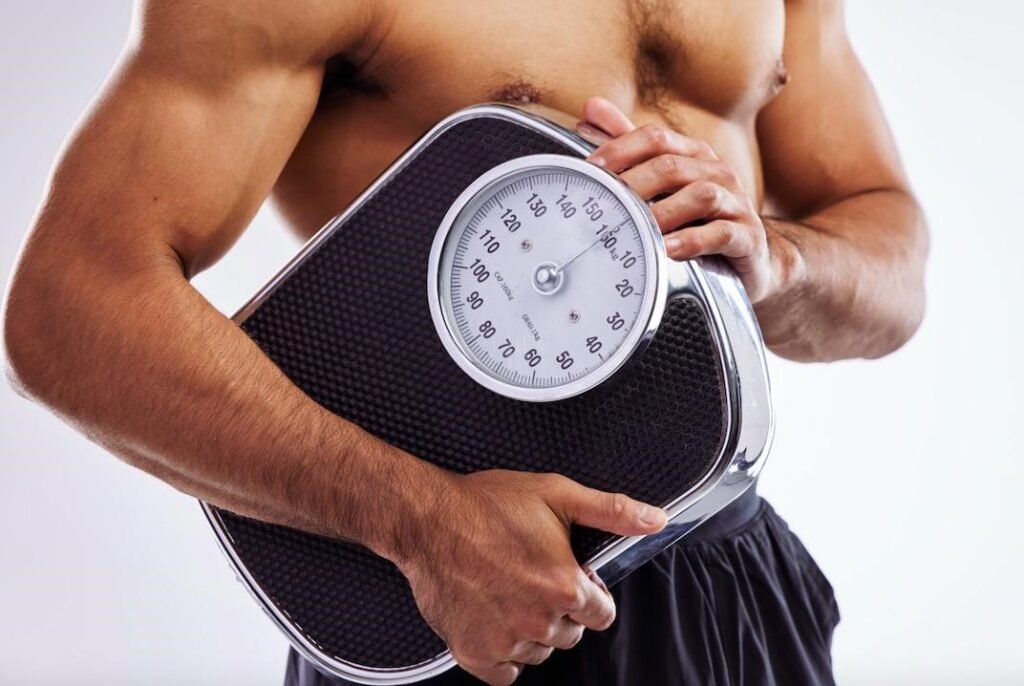
A hand holding a tape measure wrapped around a flexed bicep, with the numbers “before” and “after” written on either side. In the background, blurred-out image of a gym and workout equipment.
More protein can help keep your muscles when you’re eating fewer calories1. Also, regular strength exercises and more protein can cut fat. This really boosts your body shape and muscle strength6.
- Use of tape measure for waist, hip, and arm measurements
- Noticing how clothes fit differently as body composition changes
- Keeping a log of strength improvements in exercise performance
These strategies offer a detailed look at your health. They make sure you’re not just dropping pounds. You’re actually getting into better shape and improving your muscle tone.
Macronutrients Breakdown for Cutting and Gaining Muscle
To shape your body well, you must carefully consider how much of each macronutrient you eat. Proteins, fats, and carbs are all important. They play key roles when you want to lose fat and increase muscle mass. You need a smart eating plan to meet both of these goals.
Protein: The Building Block of Muscle
Protein is your go-to for building muscle and losing fat. Aim for 0.8 to 1 gram of protein per pound to grow your muscles. And stick to 0.7 to 1 gram if losing fat is your main aim78. This helps your muscles repair and grow, especially when you work out hard7.
Fats and Carbohydrates: Energy Sources and Their Management
Fats should be 25-30% of your total calories. They help with making hormones and keeping cells healthy7. To chip away at fat, you should eat at least 0.3 grams of fat for every pound you weigh8. Carbs are crucial for energy and keeping up your workouts. Their amount depends on how you balance things with proteins and fats. For building muscles, eating 3 to 5 grams of carbs per kilogram of your weight is suggested78.
Figuring out the right mix of macronutrients is key to reaching your goals. Here’s a table to guide you on how much of each you should aim for if you’re cutting or gaining muscle. The numbers are based on a 200-pound person and clearly show what you need for each aim.
| Goal | Calories | Protein (g) | Fats (g) | Carbohydrates (g) |
| Cutting | 2000 | 150 | 80 | 170 |
| Muscle Gain | 2750 | 150 | 100 | 313 |
Bringing this knowledge into your diet and fitness routine will tune it for the best results. Plus, it’s a great way to live healthy and balanced.
Conclusion
In the journey toward a sustainable body transformation, the teamwork of specific foods and workouts is key. Mixing a diet high in protein with the right exercises helps keep muscles during dieting. It also improves your shape by losing fat and gaining muscle. Many have proven this works, like overweight officers and skilled athletes. Following a plan combining weight training and diet changes, they lost fat and gained muscle in just 12 weeks9.
Getting your nutrients right is vital in this journey. Eating enough protein, between 0.64 and 1.4 grams per pound of body weight, helps a lot. It’s been key for old folks who wanted more muscle to gymnasts who got much fitter while eating fewer calories9. These are just a couple examples showing that you can change your body with the right efforts.
Making big changes in your body isn’t easy or quick. It takes hard work and sticking to a plan for your food and workouts. Those who have made serious changes talk about the effort they put in. They planned their meals and stayed with a workout plan. This kind of dedication doesn’t just make you look better. It also brings big health wins, like being stronger, having more power, and lowering the risk of diseases. Choosing to live this healthy lifestyle is where real change starts.
FAQ
What is body recomposition, and how does it differ from traditional weight loss?
Body recomposition means losing fat and gaining muscle together. It focuses on changing body fat to lean muscle. It’s not just about the scale but about getting healthier and stronger.
Can you really gain muscle while cutting fat?
Yes, you can gain muscle while cutting fat. It needs the right diet and exercise. High protein and strength training are key for muscle growth.
How do I create a caloric deficit for fat loss without losing muscle?
To lose fat without losing muscle, start with a high-protein diet. Add strength training to build and keep muscle. Go for a mild, not severe, caloric deficit.
What kind of diet should I follow for body recomposition?
For body recomposition, eat lots of protein, mix in good fats and complex carbs, and avoid processed foods. This combo helps maintain muscle and lose fat.
How does strength training contribute to muscle gain during body recomposition?
Strength training is key to gaining muscle while losing fat. It boosts muscle growth and speeds up metabolism, which helps with both muscle and fat loss.
What are the key exercises for maximizing muscle growth?
Focus on compound exercises like squats, deadlifts, and bench presses to grow the most muscle. Include isolation exercises for specific muscle groups, like bicep curls and tricep extensions.
Why is recovery important in strength training?
Recovery is crucial for strength training. It gives muscles the time they need to repair and grow. Remember, enough sleep, rest, and good food help your body get stronger.
How does cardiovascular exercise fit into the body recomposition process?
Cardio helps burn calories for fat loss and boosts heart health. It’s important, but not more than strength training. Just be sure to balance both to avoid losing muscle.
How should I monitor my progress during body recomposition?
Keep track by measuring your body, observing muscle changes, and observing how your clothes fit. These are better ways to see improvement than the scale alone.
How should I manage my macronutrient intake while trying to lose fat and gain muscle?
Eat more protein to build muscle, balance fats for health, and control carbs to fuel your workouts. This way, your nutrition helps with muscle growth and fat loss.
Source Links
- https://www.healthline.com/nutrition/body-recomposition
- https://www.health.com/how-to-lose-fat-and-gain-muscle-at-the-same-time-8583914
- https://www.transparentlabs.com/blogs/all/body-recomposition-how-to-lose-fat-and-gain-muscle
- https://www.nerdfitness.com/blog/lose-weight-and-build-muscle-or-do-one-then-the-other/
- https://www.menshealth.com/fitness/a44639317/lose-fat-and-gain-muscle/
- https://www.cnet.com/health/fitness/yes-you-can-lose-fat-and-gain-muscle-at-the-same-with-this-strategy/
- https://healthyeater.com/gain-muscle-lose-fat-iifym
- https://barbend.com/macros-for-fat-loss-muscle-gain/
- https://mennohenselmans.com/gain-muscle-and-lose-fat-at-the-same-time/
